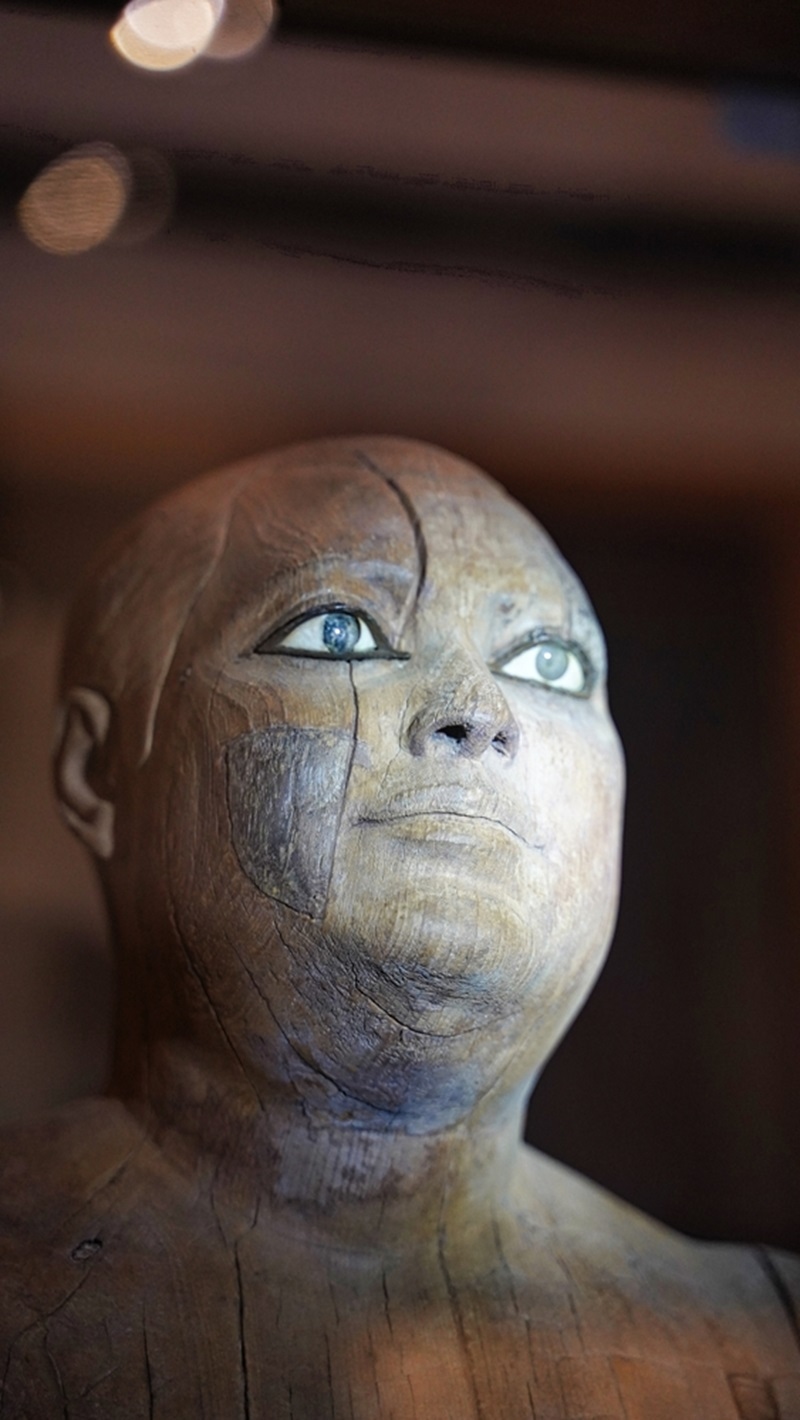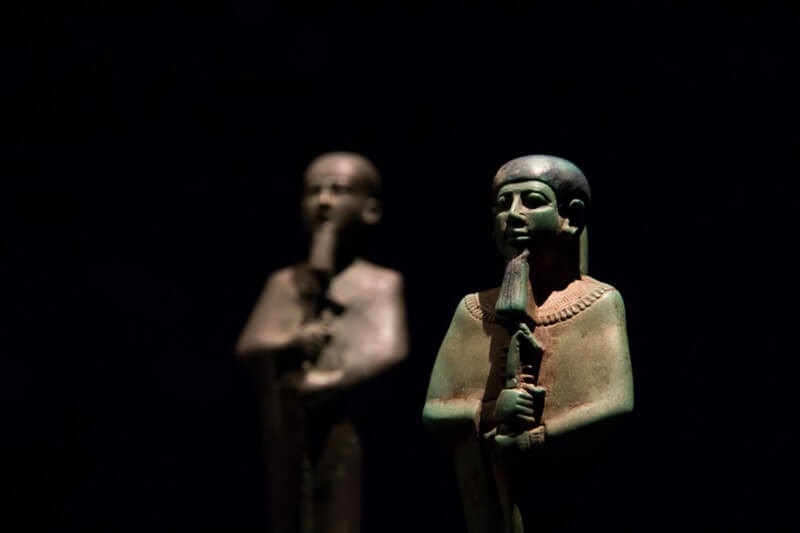
The haircuts of ancient Egyptian priests are extremely important for understanding the interplay of grooming, spirituality, and cultural traditions in one of history's most interesting civilizations. Egyptian priest hairstyles were extremely symbolic, originating in religious grooming practices that emphasized ritual purity and spiritual dedication. Shaved heads indicated priests' devotion to the gods and their function as intermediaries between the divine and human realms. In this article, we'll discuss the symbolism of shaven heads, spiritual grooming routines, and how these ancient hair traditions played an important role in Egyptian ceremonies.
Grooming in ancient Egypt was not merely a personal hygiene practice but rather a religious act. Priests who served in temples and performed sacred rituals were subject to very strict grooming standards that represented their commitment to keeping the body and soul pure. Central to this grooming was shaving their heads and bodies completely.
The shaving process was very careful and sometimes done every day so that the priest would not have any hair on his body, which is considered impure in religious practice. Shaving was a representation of the removal of earthly impurities and a physical representation of spiritual cleanliness. The practice was not limited to the head but rather to the whole body since any trace of hair could compromise the priest’s ritualistic functions.
Religious grooming rituals also depicted the priest's unrelenting dedication to their profession. Keeping themselves clean-shaven, priests showed that they were prepared to serve the gods and participate in ceremonies that demanded the highest standards of purity. This attention to grooming was a reflection of the sacred nature of their work and the reverence with which they approached their spiritual duties.

The most conspicuous part of an Egyptian priest's dress was his shaved head, which represented separation from worldly life and spiritual dedication. Ancient Egyptians felt that hair signified chaos and chaotic mess, which contrasted with the tendencies required in a sacred event, which represented order and harmony.
Priests differentiated themselves from the general public by shaving their heads to demonstrate their dedication to "Ma'at," the Egyptian concept of cosmic order and balance. This also demonstrated their role as intermediaries between the human and divine realms. A shaved head symbolized a willingness to perform holy ceremonies and communicate with the gods without the distractions or impurities that come with physical adornments.
Interestingly, the shaved head was not unique to priests but was also adopted by other religious figures, including temple workers and certain members of the royal court who participated in ceremonial functions. However, for priests, the practice held a deeper spiritual significance, reinforcing their identity as vessels of divine will.
Hair held profound symbolic meaning in ancient Egyptian culture, extending beyond aesthetics to encompass notions of identity, power, and spirituality. While hair was often a symbol of vitality and fertility in secular contexts, it took on different connotations within religious practices.
For priests, being bald signified their renunciation of the physical world and a connection to spiritual ideals. This is very different from the elaborate wigs and braids favored by Egyptian elites, as these are emblems of wealth, status, and earthly achievement. Shaving their heads symbolized priests' renunciation of all worldly markers for a form of grooming that stressed spiritual priorities.
Hair also had a function in funerary rites, being believed to be imbued with protective and magical powers. Many priests who conducted funerary rites followed similar grooming standards so that they remained pure while conducting rituals that helped guide the dead to the afterlife. Hair symbolism in such contexts underscores both its power source and its capacity to act as a barrier to spiritual purity.
Egyptian priests' grooming rituals were very closely linked to their spiritual practices since the standards for purity required in their profession were very high. Daily cleansing formed a central aspect of their lives, not just through hair removal but also regular bathing and application of ointments and perfumes.
Bathing was done several times a day in sacred pools or basins within temple complexes. Such bathing was not hygienic only but symbolic: it purified the priest before any sacred duties were performed. Smelling perfumes and oils made them even more sacred, since these substances contained divine blessings and protection.
The priests' appearance was not an exception, but their clothing, too, held symbolic meaning. Priests were attired in linen, which symbolized purity and light. Clean-shaven heads, immaculate clothing, and fragrant oils created an image of divine perfection, making the priest align with the gods they served.
Priesthood in Egyptian ceremonial functions was considered very central to these ceremonies; thus, there is a continuous interaction between gods and humans through ritual performances done by priests, grooming being very crucial in making them appear neat to the eyes in approaching divinity.
One of the most paramount rites was the daily temple ritual in which the priests would wake, dress, and feed the deity in a statue in the temple sanctuary. This ritual demanded utmost precision and reverence, as it was believed to sustain the cosmic order. The priestly appearance before being purified and their status was essential because any impurity could shake the harmony between the divine and mortal spheres.
Priests also presided over festivals, funerary rites, and other collective ceremonies, each of which required strict adherence to grooming and ritual standards. Their shaved heads and the divine personal appearance served as a reminder of their role as vessels of divine power, a bridge between the sacred and the profane.
While the shaved heads of priests are no doubt some of the most iconic features of ancient Egyptian grooming, one should note a broader context for hair practices within Egyptian society. Hair proved to be both versatile and symbolic and often utilised to represent identity, status, or cultural affiliation.
The general population styled their hair in braids or curls and beaded them, dressed them up with ribbons, and even fashioned wigs, which were a statement to the class and were also ways of dealing with the constant hot climate. These wigs were elaborately styled and perfumed and were used to represent a person's status in society and personal preference.
On the contrary, the shaving of priests' heads was a direct rejection of such secular haircuts. This serves to emphasize how priests were somewhat different from Egyptian society as their hairstyles were decided based on religious rather than social reasons.
Ancient Egyptian priests' grooming techniques continue to intrigue historians and ordinary people. They offer insights into the spiritual and cultural principles that shape it. The symbolism of shaved heads, as well as the significance of ritual purity, reveal a profound distinction between physical appearance and spiritual ideals in ancient Egypt.
These modern practices have often been likened to the current religious grooming trends, where hair is still used as an indicator of identity and commitment. The shaven heads of Buddhist monks covered the hair of certain religious groups, and so many other variations show the continuity of ancient Egyptian priest hairstyles in their modern versions.
The hairstyles of Egyptian priests- particularly their heads being clean shaved- give the most interesting overview of the religious and cultural world of ancient Egyptians. These very grooming practices, deeply rooted in the symbolism of religion as well as purity rituals, show the deep aspect of appearance where the connection between both divine and mortals is highly maintained. Their shaven heads and neat grooming indicated the priestly standing as well as a strong reminder that they were intermediaries between humankind and the gods.
This remains a popular style of Egyptian priest hair because it is more than just grooming; it signifies a statement of the spirituality, discipline, and commitment involved, which inspires and fascinates the people even today.
This content was created by AI